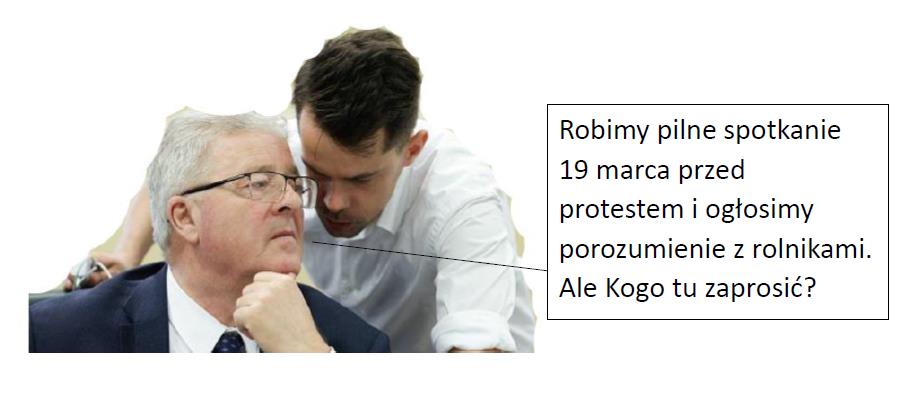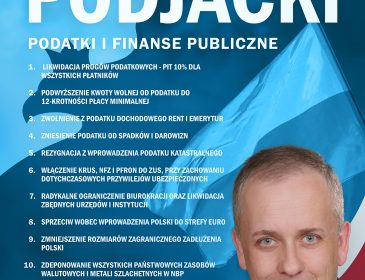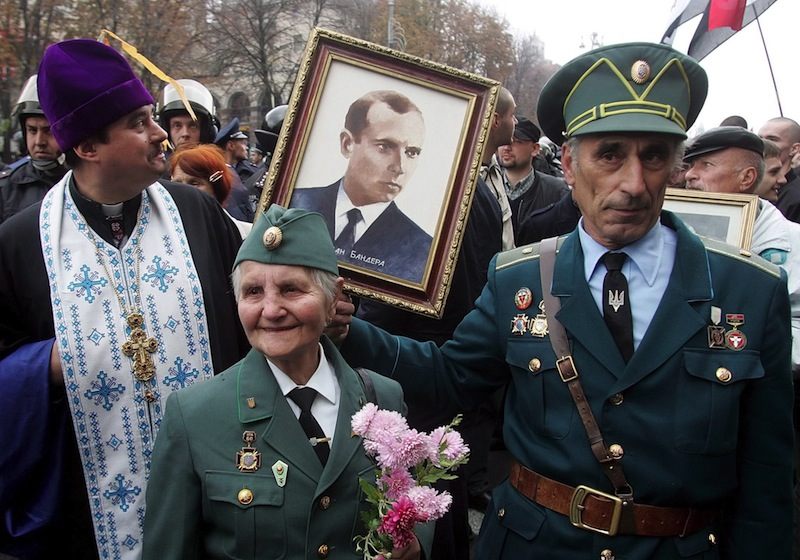-
Bohaterstwo, które podziwiał świat. „W..
POLSKA2 lata temu -
Neon24 – ruska V kolumna
POLSKA2 lata temu -
Nowe osoby w Zarządzie Amiblu
BIZNES3 lata temu -
Mechanizm warunkowości – krok ku Homo Eu..
POLSKA3 lata temu -
Wściekłe i wulgarne „Lemparcice” ..
POLSKA3 lata temu -
Rolnicze poparcie dla prezesa Elewarru – ..
NEWS3 lata temu
Bez kategorii
Like
Polski radiowywiad w antysowieckiej „osi”. Część 1.
05/03/2012
474 Wyświetlenia
0 Komentarze
27 minut czytania

Po ujawnieniu tajemnicy „Enigmy” okazało się, iż historię II wojny światowej trzeba właściwie pisać na nowo. Tymczasem ciągle nie wiadomo, gdzie się podział po wrześniu 1939 roku Referat 3 polskiego Biura Szyfrów. Ten „sowiecki”.
Rok temu Piotr Wodziński, po lekturze „trzech bardzo interesujących książek” opublikował artykuł ”Nie tylko „Enigma”…”[1].
Owe książki to:
J. W. M. Chapman, „Japan in Poland’s Secret Neighbourhood War”[2]
Ken Kotani, „Japanese Intelligence in World War II"[3]
C. G. McCay, Bengt Beckman, „Swedish Signal Intelligence”[4]
Rzecz dotyczy przedwojennej i wojennej współpracy wywiadów japońskiego, polskiego, fińskiego, estońskiego i szwedzkiego. Skierowanej przeciw sowietom.
W owej współpracy informacje uzyskiwane z radiowywiadu odgrywały rolę kluczową.
Przypomnijmy kilka najistotniejszych informacji o Biurze Szyfrów II Oddziału Sztabu Głównego :
Biuro Szyfrów
W połowie 1931 roku w Polskim Sztabie Generalnym utworzono Biuro Szyfrów poprzez połączenie Referatu Radiowywiadu i Referatu Szyfrów Własnych[11]. Biuro zajmowało się zarówno kryptografią – wytwarzaniem i nadzorem korzystania z szyfrów i kodów – jak i kryptologią, czyli badaniem szyfrów i kodów, w szczególności w celach „łamania” ich.
W latach 1932 i 1936 Biuro Szyfrów podjęło się dodatkowych obowiązków dotyczących łączności radiowej między punktami wojskowo-wywiadowczymi w Polsce i za granicą, a także kontrwywiadem wojskowym – polegającym na rozpoznawaniu i przechwytywaniu stacji, lokalizujących i analizujących ruch nadajników szpiegowskich działających w Polsce.
Referaty Biura Szyfrów
Biuro Szyfrów zostało podzielone na 4 referaty:
- BS1 – szyfry własne
- BS2 – radiowywiad
- BS3 – szyfry rosyjskie
- BS4 – szyfry niemieckie
- BS3 i 4 były odpowiedzialne również za kontrwywiad i nasłuch radiowy
Stacje pelengacyjne
Biuro Szyfrów przy Oddziale II Sztabu Generalnego dysponowało 7 stacjami, które zajmowały się namiarem (tzw. pelengacją) i całodobowym nasłuchem obcych stacji radiowych.
W kierunku zachodnim (niemieckim) działały 3 stacje pelengacyjno-nasłuchowe:
• Nr 3 – mieszcząca się w Krzesławicach pod Krakowem
• Nr 4 – w Poznaniu
• Nr 5 – w Starogardzie
W kierunku wschodnim (Związek Radziecki) działały 4 stacje:
• Nr 1 – w Warszawie (w Cytadeli)
• Nr 2 – w Lidzie
• Nr 6 – w Równem
• Nr 7 – w Kołomyi
Grupy ruchome
W strukturach Oddziału II w kierunku wschodnim działały również 4 manewrowe stacje namiaru i nasłuchu radiowego (tzw. grupy ruchome). W 1939 r., na wieść o groźbie wybuchu wojny, zostały przeniesione na Pomorze i Śląsk Cieszyński. Grupy ruchome:
• C
• Z
• M
• P
Główne zagrożenie
Za główne zagrożenie dla bezpieczeństwa II Rzeczypospolitej uważano Związek Radziecki i tam kierowano główne wysiłki wywiadowcze Oddziału II i Biura Szyfrów.”[5]
Wedle Harukichi Hyakutake[6] (występującego także jako także Haruyoshi Hyakutake), jednego z sześciu japońskich oficerów, którzy ukończyli w Polsce roczny kurs kryptograficzny, polski wywiad zatrudniał ok. 260-270 osób zajmujących się łamaniem szyfrów sowieckich i niemieckich.
<<„W połowie września 1936 roku – pisze Piotr Wodziński- przedstawiciel szwedzkiego Sztabu Generalnego, kapitan Hallenberg, został wysłany do Tallina celem przeprowadzenia rozmów z partnerami estońskimi. Ekspertem po stronie estońskiej był podpułkownik Artur Normak. W momencie wizyty Hallenberga Normak był szefem kursów dla oficerów służb technicznych w zakresie wywiadu radiowego.
Wedle raportu kpt. Hallenborga z rozmowy z ppłk Normakiem: "podpułkownik N. utrzymuje, że prawdopodobnie żaden inny kraj nie ma tak dobrej wiedzy o rosyjskich metodach szyfrowania i radiotelegrafii, jak Polska i zalecał szwedzkiemu Sztabowi Generalnemu poszukiwanie kontaktu z ekspertami z tego kraju.">>
Zaś japoński „The National Institute for Defense Studies” (NIDS) w artykule “Japanese intelligence and the Soviet-Japanese border conflicts in the 1930s”[7] podaje:
„Japanese signal intelligence on the Soviet was not insignificant and the signal intelligence was called “Toku-jo (special intelligence)” by the Japanese. The Japanese army began to study the Russian signal traffic and its cipher in 1923, inviting a Polish cipher specialist, Jan Kowalevsky, captain of the Polish army. In addition, the Japanese General Staff sent 4 intelligence officers to Poland to study Soviet ciphers. In 1934 the Special Signal Intelligence Section was set up in the Kwantung Army and started codebreaking activities of Russian signal traffic. There were 8 intercept stations in Manchuria and almost 1000 staffs were working on Soviet codebreaking. Each station intercepted 20 Russian signal traffics everyday. In sum, the Kwantung Army obtained 50,000 signal data in a year .
In May 1936, the section obtained one of the Soviet Red Army’s cipher code, called “OKK5” through the Polish General Staff. Based on the code book, the Japanese team succeeded in breaking the Soviet Army’s 4 digits code cipher and the Soviet border guard’s code, “PK1” in July 1936. This success was applied to the Soviet-Japanese border conflicts in the late 1930s. On 19 June 1937, Russian border guards landed on the Kanchatzu island in the Amur river, the border line between Manchuria and USSR and occupied the island. During the incident, the Japanese team broke the Sowiet border guard’s 4 digits code, the Soviet Red Army’s 4 digits code and the Soviet Air Force’s 3 digits code and gathered information. The team revealed that the order guard’s reckless landing was not an order from Moscow, but the result of a judgment by the local commander and that Moscow did not want to fight against the Japanese. The Japanese codebreakers also confirmed that the Soviet General Staff did not order a sortie of their air force in the Far East.
According to the signal intelligence, the Japanese government started diplomatic negotiations with the Soviets. On 30 June, three Soviet gunboats suddenly invaded the Manchurian side of river and fired at the riverbank. However the signal intelligence foresaw the Russian operation and the Japanese and Manchurian border guards fired back on the gunboats, sinking one and
damaging others.
One year later, signal intelligence again revealed that the Russians had started to construct field positions on the Changkufeng hill, on the border of Manchuria and the USSR. It was 6 July 1938. In the signal intelligence, the Soviet border guards were planning to capture the small hill, because it was a tactically vital point on the border.
The border line between Manchuria and USSR was ambiguous and Japanese and
Russian troops were not stationed in the area.
The Japanese General Staff in Korea took the signal intelligence seriously and ordered the 19th Corps to scout the situation at Changkufeng. As a result of the reconnaissance, the Soviet’s development on the border was confirmed and the Japanese troops advanced toward the border line. The number of Russians on the border was gradually increasing from 10 to 50 persons. Finally the Japanese General Staff ordered that a battalion to be sent to keep the border line, after which both troops were confronting each other. On 29 July 1938 the tension was broken by Japanese blow on the Soviet troops and the border conflict began.
During the battle, the signal intelligence that showed developments of the Russian troops on the ground was a great help for the Japanese troops. Especially, the Japanese codebreaking team could follow the Soviet tank troops’ movement from Vladivostock to Changkufeng and the signal intelligence contributed to the Japanese tactical success.
Also, during the battle of Nomonhan, June 1939, the Japanese signal intelligence section broke border guard’s 4 digits code, the Army’s 4 digits code and Air force’s 3 digits code. The signal success gave tactical advantage to the Japanese troops on the front line.
After the battle of Nomonhan, the Soviet Red Army adopted a new 5 digits code, “OK40”, which was quite difficult to break for the Japanese. However the 5 digits code had been broken by the Finnish codebreaking team during the Russo-Finnish War, which started in November 1939. The Japanese team obtained the data from the Finnishs and succeeded to decode the 5 digits code. The Japanese also succeeded in breaking the 4 digits code of the Soviet Navy and Air Force.”
W tradycji japońskiej "incydent Nomonham", na zachodzie znana jest jako bitwa nad Chałchin-Goł. Trwała od 11 maja do 16 września 1939 roku. Dopiero po tej dacie sowiecka armia przyjęła nowy kod „OK40”, złamany jednak nie przez Finów, lecz radiowywiad estoński:
„To właśnie dziełem kpt. Ouna (oficer estoński) było m.in. złamanie najnowszego szyfru Armii Czerwonej we wrześniu 1939 roku, co okazało się bardzo przydatne dla Finów w czasie „wojny zimowej”, w której Estonia ściśle współpracowała ze swoimi odpowiednikami po drugiej stronie Zatoki Fińskiej na gruncie wywiadowczym.”, podaje Wodziński za autorami „Swedish Signal Intelligence”.
„Nie ma chyba bezpośrednich dowodów – pisze Wodziński – na polsko-fińską współpracę wywiadowczą, choć nie można przesądzać sprawy, są jednak dowody pośrednie. Według Chapmana, we wcześniej wspomnianym artykule znalazła się informacja, że w 1937 roku niemiecki attache wojskowy w Warszawie, gen. mjr Schindler, stanowczo oponował wobec przekazywania jakichkolwiek materiałów wywiadowczych na temat ZSRR Finom, gdyż „it would invariably be relayed to the Poles”. Niech to wystarczy, roboczo, za komentarz.”
Można przypuszczać, iż co najmniej do połowy września 1939 roku polskie biuro szyfrów czytało sowieckie telegramy równie dobrze jak japońscy kryptolodzy.
Przekroczenie polskiej granicy przez wojska sowieckie 17 września 1939 roku dla żadnego z wymienionych wywiadów nie było niespodzianką. Przypomnijmy, iż jedna z polskich stacji pelengacyjno-nasłuchowych mieściła się w Kołomyi.
Po ujawnieniu pod koniec lat sześćdziesiątych tajemnicy „Enigmy” okazało się, iż historię II wojny światowej trzeba właściwie pisać na nowo. Tymczasem ciągle nie wiadomo, gdzie się podział:
Referat 3 polskiego Biura Szyfrów.
Szefem referatu szyfrów sowieckich był w 1939 roku Jan Graliński:
“Jan Józef Graliński (February 8, 1895 – January 9, 1942) was chief of the Polish General Staff’s interbellum Cipher Bureau’s Russian section, B.S.-3.
After Poland was overrun by the Germans and Soviets in September 1939, Graliński managed, along with other Cipher Bureau personnel, to reach Paris, France. He became part of the reconstituted Polish cryptologic unit that was housed during the "Phony War" in the Château de Vignolles, codenamed PC Bruno, at Gretz-Armainvillers, some forty kilometers northeast of Paris.
After northern France was overrun by German forces in May-June 1940, Graliński was one of the Polish cryptologic team that operated at Cadix in southern, Vichy France’s "Free Zone."
Graliński perished in the Mediterranean Sea, near the Balearic Islands, on January 9, 1942. He was returning to the Cadix center, near Uzès in southern France, from a stint at Cadix’s branch office at the Château Couba on the outskirts of Algiers. His passenger ship, the Lamoricière, sank in unclear circumstances. Fellow victims of the disaster, among the 222 passengers lost, included Piotr Smoleński, likewise of the prewar Cipher Bureau’s Russian section, and Jerzy Różycki of its German section, as well as a French officer accompanying the three Poles, Capt. François Lane.
In 1978 cryptologist Marian Rejewski, of the prewar Cipher Bureau’s German section (B.S.-4), was asked by historian Richard Woytak whether he had known Capt. (eventually Major) Graliński. Rejewski replied that he had but that, for reasons of security, they had never discussed their respective cryptologic work. Rejewski added that Graliński "was supposed to have been very talented." [8]
Kolejnym kryptologiem BS3, którego nazwisko znamy, był Piotr Smoleński. Razem z Gralińskim znalazł się po wrześniu 1939 we francuskim ośrodku Bruno. W ekipie polskiej pracowało 15 osób. Szef polskiego BS, jego zastępca, pięć kolejnych osób zajmowało się szyframi niemieckimi. Czyli mogło być tam nawet ośmiu specjalistów Referatu 3, zajmujących się szyframi sowieckimi.
Tadeusz Lisicki, konstruktor, dowódca Batalionu Łączności Naczelnego Wodza w Anglii podczas II wojny światowej, koordynator prac polskich kryptologów już w Wielkiej Brytanii, w uwagach do jednej z książek poświęconych „Enigmie”(zapewne Władysława Kozaczuka), co do strony 94, spisał między innymi:
„Szkoda że autor nie wspomina o deszyfrażu z telegramów sowieckich przez Bertranda i jego ekipę”.[9]
MICHAELL. PETERSON w “Before BOURBON: American and British COMINT Efforts
against Russia and the Soviet Union before 1945” (Cryptologic Quarterly)wspomina o skierowanej przeciwko sowietom współpracy służb brytyjskich z Polakami i Finami:
“Turning to the Russian naval target, by 1937 the naval Y station (i.e., intercept site) at Scarborough was taking Russian, along with German traffic. But there was a definite lack of purpose in the cryptanalytic work done on Soviet naval codes and ciphers until 1935, at which time all study was abandoned entirely until the outbreak of World War II.
Limited traffic analysis was then resumed, supplemented in 1940 by the work done by a party of Polish analysts. Information was exchanged with the Finns; incidentally, the British cooperated with both the Finns and the Poles in SIGINT exploitation of Russian until 1941." Several minor naval systems were broken into, and the decrypts were circulated, but they were too fragmentary to be of much interest. In September 1941, the Russian Naval Section was disbanded."[10]
Także współpraca polskich i japońskich kryptologów nie skończyła się w roku 1939.
W przypisie numer 42 do swojego artykułu Piotr Wodziński dodaje:
“Tu konieczna jest wzmianka obecna tak u Chapmana, jak i u Kotaniego, która wymaga sprawdzenia, co nie musi być łatwe. Mianowicie, obaj wspominają o tym, że już po wrześniu 1939 służby japońskie umożliwiły opuszczenie Europy i uniknięcie dostania się w ręce NKWD bądź GRU kilku polskim oficerom Biura Szyfrów, w tym jednemu z kryptologów wyspecjalizowanych w szyfrach sowieckich. Występuje on pod pseudonimem "Michel" ("Michał"?). Przez całą wojnę miał on, zdaniem autorów, pracować w Tokio nad szyframi sowieckimi. Część z tych oficerów opuściła następnie Japonię (Mandżurię?) po ataku na Pearl Harbor i udała się do Wielkiej Brytanii. Jakaś forma współpracy kryptologicznej polsko-japońskiej miała mieć także miejsce w Bukareszcie, być może również w Budapeszcie. Informacje mogą być trudne do zweryfikowania, gdyż o specjalistach-kryptologach „niemieckich”: Rejewskim, Różyckim i Zygalskim, wiemy. O specjalistach od szyfrów sowieckich właściwie nie wiemy nic.”
Także biuletyn Central Intelligence Agency w artykule “ANTI-SOVIET OPERATIONS OF KWANTUNG ARMY INTELLIGENCE,1940-1941” podaje:
“To handle cryptographic intercepts a Kwantung Army Communication Intelligence Group was formed, based on the old Research Unit but with considerably augmented organization and equipment. The Communication Intelligence Group concentrated on Soviet cryptographic traffic and, except for a separate Kwantung Army Air Force organization specializing in Soviet Air Force codes, had exclusive responsibility in this field; other cryptanalytic activities of the Japanese Army were confined to other countries than the Soviet Union.
Several steps were taken to increase the Group’s capacity for deciphering Soviet traffic, and one of these was made possible by a little-known history of Japanese-Polish cooperation in anti-Soviet intelligence; it had been this collaboration between the general staffs of the Japanese and Polish armies in the thirties that had resulted in the formation of the old Research Unit. When the Polish General Staff collapsed in 1939 with the fall of Warsaw, four of its qualified intelligence officers, including one cryptanalyst, facing capture by Soviet forces, were recruited by the Japanese military attaché and dispatched to Japan, arriving in March 1940. After Japan signed the Tripartite Pact with Germany and Italy, three of them left for London to join the Polish Army Headquarters in exile, but it was suggested to the cryptanalytic expert that he stay in Japan because of his past friendly relations with the Japanese Army General Staff. This man was put in charge of the Communication Intelligence Group’s research effort, and he rendered significant service in improving techniques for deciphering Soviet codes.”[11]
Decyzję o przekazaniu tajemnic Enigmy Francuzom i Anglikom podjął w 1939 roku szef Sztabu Głównego gen. Wacław Stachiewicz, zapewne za wiedzą i zgodą swojego przełożonego, marszałka Śmigłego-Rydza. Z całą pewnością przedwojenne decyzje o strategii współpracy z Japończykami były uzgadniane pomiędzy Śmigłym, a Józefem Beckiem.
Być może studiowanie dziejów Armii Kwantuńskiej, czy sowiecko-fińskiej wojny zimowej pozwoli nam cokolwiek zrozumieć z tej „najdziwniejszej z wojen”, polskiej wojny roku 1939.
[2] J. W. M. Chapman, „Japan in Poland’s Secret Neighbourhood War”, Japan Forum, Vol. 7, No. 2, Autumn, ©BAJS, 1995.
[3] Ken Kotani, „Japanese Intelligence in World War II", Osprey Publishing Ltd., 2009.
[4] C. G. McCay, Bengt Beckman, „Swedish Signal Intelligence”, Frank Cass & Co. Ltd., 2003.
[5] Źródło: Wikipedia.
[6]http://books.google.pl/books?id=7-MFQCFryGMC&pg=PA22&lpg=PA22&dq=Colonel+Fukai+Eiichi&source=bl&ots=DlqJ_6EJi1&sig=Bw3Gf08Ez2rCKklpA6TOrNcqhI8&hl=pl&sa=X&ei=R0BTT8PFIcOCOpLb5asE&ved=0CB8Q6AEwAA#v=onepage&q=Colonel%20Fukai%20Eiichi&f=false
[8] Źródło: Wikipedia.
NASTĘPNY ARTYKUŁŁzy Putina.
COPYRIGHT 2023 3OBIEG.PL - SERWIS INFORMACYJNY DZIENNIKARSTWA OBYWATELSKIEGO



























